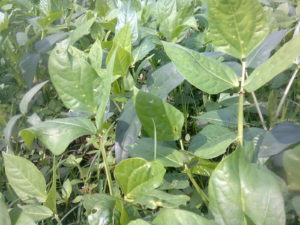In agriculture, there are many types of horticulture plants, vegetables and fruits alike. Of course, the caring and conditions needed by them are all unique and different. Proper knowledge is needed especially if you want to implement intercropping as an effective way to optimize your land use.
Intercropping is not a foreign word in the world of agriculture. Intercropping is what happens when you plant more than one kind of crops on your land.
For example, in one seedbed of red chili trees, you plant currant tomato plants in between the holes for chili trees. However different those two kinds of plants are, they are a good fit for intercropping. Another example would be cassavas and corns together.

The positive effect of intercropping is also you can save your money by optimizing your land use. The result of intercropping is just as good as monoculture or crop rotation.
Meanwhile, second crop is what we call secondary plants other than rice in rice fields. Examples of common second crop are peanuts, long beans, pumpkins, cassavas, corns, red beans, sweet potatoes, peas, cowpeas, soybeans, mung beans, etc. Second crop is commonly planted by farmers and hobbyists alike. Have a good try!
